There are many benefits to both cycling and running and they can often be used together when you train. However, if you’re going to pick between running and biking there are several reasons why biking is the better choice. Here’s a couple of facts why cycling is better than running. [Read more…]
From Bike Riding to Bike Racing
 You’ve been riding for a couple of years now. The days of struggling up every incline, and falling over at traffic lights because you can’t get your feet out of your pedals is over. You’ve done some epic long rides with friends. Maybe you have started commuting in to work. But now, riding is starting to get a bit stale. The motivation to get out the door on the weekend isn’t quite what it used to be. You are looking for the next thing to add to your bike riding experience. What you are looking for is bike racing.
You’ve been riding for a couple of years now. The days of struggling up every incline, and falling over at traffic lights because you can’t get your feet out of your pedals is over. You’ve done some epic long rides with friends. Maybe you have started commuting in to work. But now, riding is starting to get a bit stale. The motivation to get out the door on the weekend isn’t quite what it used to be. You are looking for the next thing to add to your bike riding experience. What you are looking for is bike racing.
Bike Racing in a Nutshell
Amateur bike racing works a little differently than running, triathlons, and similar sports. If you were to sign up for your local 5k road race, you would line up with everyone else at the start, the gun would go off, and you would race. Bike racing isn’t like that – due to the differences in skill and bike handling ability, races are broken up into different categories. As a beginning rider, you will start off in the lowest category (usually Cat 5) and work your way up as you gain experience and skill. In most areas, just finishing 5-10 races will be enough to move up from the bottom category, but after that, the only way to move up is to place well in races. Most amateur riders end up in Cat 3 or Cat 4 – Cat 1 and 2 are getting into serious, semi-professional level racing.
Choosing Your First Race
Picking your first race can be daunting. The best place to start looking is the website of your state or provincial bike racing association. They should have a calendar showing all of the upcoming races in your area. There are three main types of races:
-
Road races are what you typically think of when you think of bike racing – a bunch of people racing in a big bunch from point A to point B.
-
Time trials are individual efforts over a set distance where you don’t have the advantage of drafting off other riders.
-
Criteriums are a special, high-octane style of race usually held on a small 1-2 mile loop course, with intermediate sprints, bonuses, and no set race distance.
A road race is a pretty safe choice for your first race. Time trials don’t really give you a proper bike racing experience, and criteriums require a higher level of bike handling skill and fitness. Pick a race at least one or two months away – you need enough time to get yourself ready!
Training & Preparation
With your goal race in mind, it’s time to get down to training. Yes, you can show up to a race without having done anything different and survive, but you will get a lot more out of it with a bit of race-specific preparation. This centers around two things:
-
Bike-handling: you will spend most of the race with other riders just a couple of feet ahead, beside and behind you. It takes some getting used to. Try to find a local group ride that you can join – the more people the better. Usually, the more experienced riders are pretty good about helping out newer riders. The most important thing to remember is don’t make any sudden, unexpected moves.
-
Fitness: racing is far more intense than any recreational ride you have been on. It won’t be 100% intensity from start to finish, but when the pace heats up, you’d better be ready, otherwise you will get dropped and have to finish the rest of the race solo. Some groups rides can get pretty intense, and if you can find one of these great – you get bike handling and fitness training all in one. If not, intervals are your best friend. Find a traffic-free circuit that you can ride without interruptions, and do sets of 30 second, 1 minute and 2 minute hard efforts with 1-3 minutes of recovery between each effort. Aim for at least 10 minutes of hard effort time; 20 is better.
It’s Here – Race Day!
Now that you’ve put in all the hard preparation work, it’s time for the race! Most bike races are in the morning, and it is important to wake up well before race time. 3 hours before is usually my minimum, and 4 is better. You will want to make sure your bike is in tip-top shape the night before – on race day, you shouldn’t have to worry about anything more than a quick top up of your tires. Aim to arrive at least an hour before your race is scheduled to start to give yourself enough time to check in, get your numbers and get everything ready. The race officials will tell you how you need to pin your numbers on. Once you are all kitted up, get on your bike and do some easy cycling to warm up, finished off with a few very short sprints to get your legs accustomed to moving fast. Then it is time to line up! When the race starts, just relax, and enjoy your first race. As the race progresses, you will get more and more comfortable with racing. Before you know it, you will be gasping across the finish line, wondering what happened to the last hour or two of your life, and hopefully eagerly anticipating signing up for the next one!
Top 10 Best Cycling Moments That Everyone Experiences
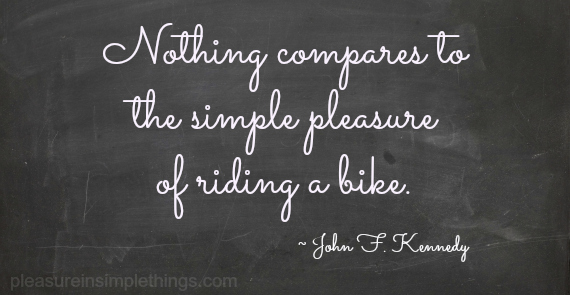 Many cyclists are into the sport for different reasons but there are some cycling moments that everyone experiences at least once in their cycling lives. Here’s the top 10 best cycling moments that everyone experiences. [Read more…]
Many cyclists are into the sport for different reasons but there are some cycling moments that everyone experiences at least once in their cycling lives. Here’s the top 10 best cycling moments that everyone experiences. [Read more…]
How To Mentally Prepare For A Race
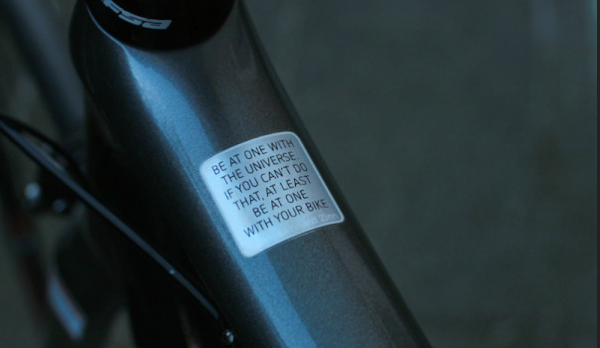 Being in a good place mentally is half the battle when it comes to preparing for a race. You want to be focused, relaxed, and confident when you begin. If you show up flustered, disorganized, or worried you’ll have a harder time focusing on what you need to do, how to pace yourself, or even how to breathe properly. Here’s some tips on how to mentally prepare for a race. [Read more…]
Being in a good place mentally is half the battle when it comes to preparing for a race. You want to be focused, relaxed, and confident when you begin. If you show up flustered, disorganized, or worried you’ll have a harder time focusing on what you need to do, how to pace yourself, or even how to breathe properly. Here’s some tips on how to mentally prepare for a race. [Read more…]
Bike Handling Tips for Early-Season Riding
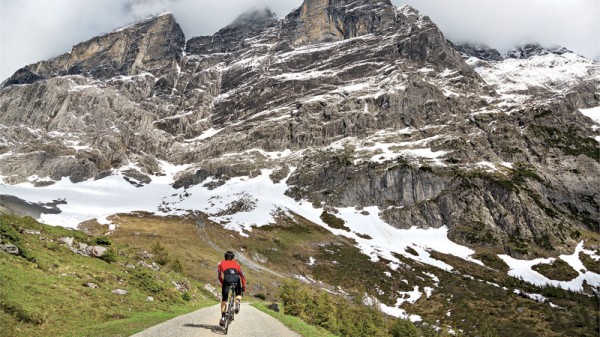 Early season riding conditions can be very challenging. During the winter, a ton of grit and salt gets dumped on roads to keep them grippy and snow-free, and, come spring time, all of that stuff ends up in one place – the shoulder where you want to ride. Spring is also pothole season, as water seeps into cracks in the road and freezes overnight, opening up holes the size of the Grand Canyon on your favorite roads. There are a few simple bike handling tips to keep your skin off the road and your bike in one piece.
Early season riding conditions can be very challenging. During the winter, a ton of grit and salt gets dumped on roads to keep them grippy and snow-free, and, come spring time, all of that stuff ends up in one place – the shoulder where you want to ride. Spring is also pothole season, as water seeps into cracks in the road and freezes overnight, opening up holes the size of the Grand Canyon on your favorite roads. There are a few simple bike handling tips to keep your skin off the road and your bike in one piece.
SLOW DOWN!!!
This seems obvious, but it is easy to forget in the middle of one of your favorite descents. Slower speeds mean more time to react to what is in front of you. Slow down well in advance of corners so you aren’t braking hard while turning – doing so increases the chance of losing traction.
Take your lane.
Most of the road grit accumulates on the shoulder of the road, and you can avoid this by moving out into the travel lanes. Be VERY careful when doing this – think ahead, and don’t try to move out in front of a line of cars just before your corner. Wait for a large gap in traffic, and move out well into the lane, so cars aren’t tempted to try and squeeze by you. On long, switchbacking descents, I will usually just stay in the travel lanes to avoid having to move back and forth.
Relax.
Hitting a small patch of gravel or wet spot won’t necessarily cause you to crash. Overcorrecting for a small skid of your back tire will. Staying relaxed and confident will help you ride through small skids instead of tensing up and turning the small skid into a huge wipe-out. You can build this confidence through other types of cycling – mountain and cyclocross riding will both give you the experience of feeling your bike sliding through turns, which will help you become a more confident road rider.
Obstacle avoidance.
Be it potholes, glass, or ice, there is a lot of stuff on the roads that you and your bike would rather avoid. Your first key to avoiding this nasty stuff is to look ahead – the earlier you see something, the easier it will be to avoid. When you know what you want to avoid, doing so requires a bit of practice. Anyone who has managed to hit the only pothole on a clear stretch of road knows what I am talking about – your bike will tend to go where you are looking. If you are looking at that one pothole, there is a good chance you are going to hit it. Instead, work on keeping your eyes focused on the clear path you want to take, and your bike will follow.
Bunny-hops.
Sometimes, despite your proactive road reading and all of your best obstacle avoidance techniques, you just can’t ride around something. Often this has something to do with the 2 ton hunks of metal passing by on your left. This is when the bunny-hop comes in handy. Bunny-hopping is like jumping on your bike – both wheels lift off the ground for a split second. If you have never done this before, practice at slow speeds first. Clipless pedals make it much much easier and safer as well. When you do encounter something you can’t ride around, don’t try to jump too high – for potholes, your wheels barely need to leave the ground.
Keep these tips in mind when you head out on your next ride, and you will be well equipped to deal with whatever the spring roads will throw at you!
What You Need On a Long Bike Ride
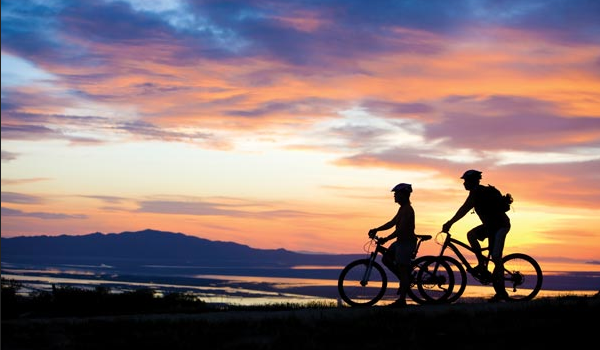 Long bikes rides are a wonderful way to enjoy your time to yourself or others and get in some much needed fun. However, if you do plan on spending hours or even days on your favorite bike route, there are some things that you will want to take with you. This simple checklist will help you take on any challenge or emergency you may meet on the bike trail. [Read more…]
Long bikes rides are a wonderful way to enjoy your time to yourself or others and get in some much needed fun. However, if you do plan on spending hours or even days on your favorite bike route, there are some things that you will want to take with you. This simple checklist will help you take on any challenge or emergency you may meet on the bike trail. [Read more…]
How to Change Bike Gears
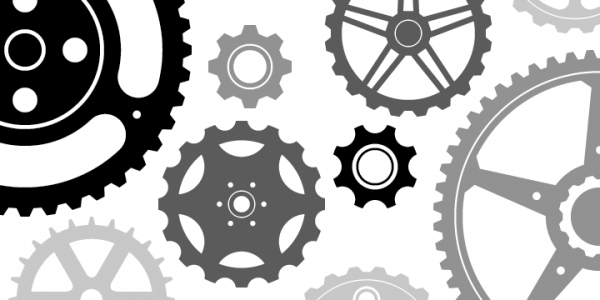 Changing your bike gears while cycling takes some practice in order to accomplish the change fluidly. Avid cyclists know that if you ride your bike off road or on any kind of terrain that isn’t flat you will need to change gears. Most bikes contain anywhere from ten to twenty-seven gears that are split between the front and back wheels. Knowing when and how to change them is an important part of cycling. [Read more…]
Changing your bike gears while cycling takes some practice in order to accomplish the change fluidly. Avid cyclists know that if you ride your bike off road or on any kind of terrain that isn’t flat you will need to change gears. Most bikes contain anywhere from ten to twenty-seven gears that are split between the front and back wheels. Knowing when and how to change them is an important part of cycling. [Read more…]
Post Ride Recovery Rituals
Many cyclists have different ways of cooling down after a long ride. In fact, each person will find that they have different needs when it comes to their muscles depending on the ride itself. Of the multiple post ride recovery rituals, here are a few of the most popular.
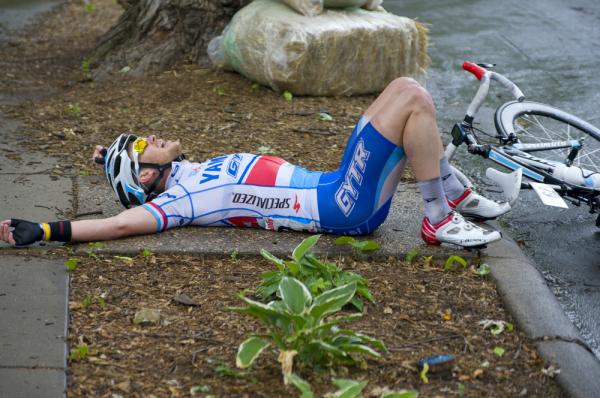
Stats
Not everyone is in to stats, but the ones that are are obsessed. One of the most common things to do after a ride is to upload your stats and check them – even before you take off your shoes. Did you capture that KOM? Did you have a higher average power output? How fast did you climb that hill…
Fluids and Food
One of the most efficient ways to recover is to replace the lost fluids in your body. During your bike ride you will most likely find that you sweat quite a bit. Sweat is the body’s way of cooling you down so that you don’t overheat, but it can also cause dehydration. Because water drives nearly every metabolic function in your body, dehydration is no joke. You can also lose the salts in your body through sweat. Both the fluids and the salts need to be replaced.
Eating food after your ride will also help you recover by replenishing the fuel stored in your body. By eating the proper food, you will be able to recover energy more quickly and your body will also be able to repair any tissue damage caused by exercise. The ideal time to eat after your bike ride is within 60 minutes of finishing.
Stretching/Massage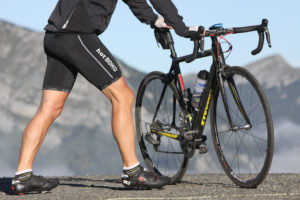
An important part of a post ride recovery is stretching. Don’t bother with strenuous stretching, but rather very gentle stretching. This will keep your loose muscles from becoming too rigid too quickly as they try to return to their resting state. This will also help prevent muscle soreness.
Massage is also going to help clear the lactic acid out and help you recover; however, not everyone can afford a massage after every ride. I recommend using a foam roller, if you do not already, it will change your life.
Rest
Rest is the most important thing you can do to recover from any sort of exercise. Even if you just take a few minutes to rest, you will feel better than if you didn’t rest at all. A 10 – 30 minute nap is ideal if you are able to sneak it in, but a good night’s sleep is the best thing you can do for yourself. Not only will you be able to recover fully but you will be more prepared for the next time you get on your bike.
When you are in recovery mode remember: Never stand when you can lean, never lean when you can sit and never sit when you can lie down!
Your post ride recovery ritual will depend on how hard of a bike ride you had. By tailoring your ritual for what your body needs, you will be able to recover quickly and efficiently. By recovering properly you will also be able to prevent the injuries that come with tired or strained muscles.
Some of the Ways Cycling Saves You Money
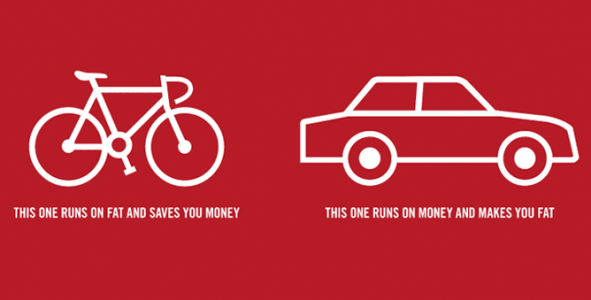 When someone initially thinks about saving money in a big city they eventually come to the idea of cycling. This is because cycling is a remarkable way of saving money in many different ways. Some of these ways may surprise even avid bikers. [Read more…]
When someone initially thinks about saving money in a big city they eventually come to the idea of cycling. This is because cycling is a remarkable way of saving money in many different ways. Some of these ways may surprise even avid bikers. [Read more…]
How To Pick The Right Bike Shorts
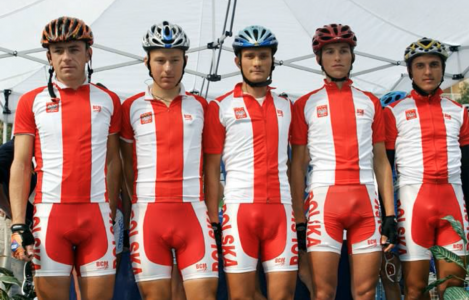 Bike shorts, as with any kind of exercise clothing, the need to be comfortable and do the job you need them to do. Not only should the right bike shorts not pinch when you ride, they need to conform to your body and not shift during the movements you’ll make while cycling. Unfortunately, the best way to find the right pair of shorts will ultimately be to try them on and test them out. This is because everyone’s body is different, so everyone will have a different preference of brand, size, and fit. However, here are a few tips to keep in mind so that the process doesn’t seem so hit or miss. [Read more…]
Bike shorts, as with any kind of exercise clothing, the need to be comfortable and do the job you need them to do. Not only should the right bike shorts not pinch when you ride, they need to conform to your body and not shift during the movements you’ll make while cycling. Unfortunately, the best way to find the right pair of shorts will ultimately be to try them on and test them out. This is because everyone’s body is different, so everyone will have a different preference of brand, size, and fit. However, here are a few tips to keep in mind so that the process doesn’t seem so hit or miss. [Read more…]